An animal with a trunk draws more attention than any animal because it is one of the cool and amazing features of few animals.
In this Article, We shall look at ‘Animals with Trunks’ across the world along with their function and purpose.
A trunk is part of an animal body apart from limbs that can be as large as the nose of an elephant or as small as the nose of a tapir. This trunk can perform many functions such as breathing, trumpeting, digging, and can be used as a snorkel.
Table of Contents
Animals With Trunks
Elephant

An Elephant is the biggest terrestrial mammal currently living with us that belongs to Family Elephantidae, Order Proboscidea, and is found in Asia, and Asia.
A striking feature of an elephant is its long nose, which is modified into a trunk that plays many roles such as breathing, grasping, smelling, trumpeting, drinking, and so on. Interestingly, It has about 40,000 muscles and ends with a finger-like projection. The weight of an elephant trunk is about 130 kg, which may vary even by weight and length depending on the species and regions.
Surprisingly, The Asian elephants have only one finger-like projection at the end of their trunks while the African elephants have two finger-like projections.
Anteaters

The Anteater including Giant anteater, Silky anteater, is a mammal that belongs to Genus Myrmecophaga, Family Myrmecophagidae, and is found in Mexico, Paraguay, Argentina, Central, and South America, and other parts of the world.
This toothless animal has a relatively long trunk that is actually a long proboscis that includes a prominent snout containing an elongated mouth, tongue, and nose. Its long trunk pass-through ant and termite hills where it finds and eats termites and ants through their long tongue.
Fortunately, Its long trunk with a nose gives it a better sense of smell that helps in locating the food sources.
Walrus
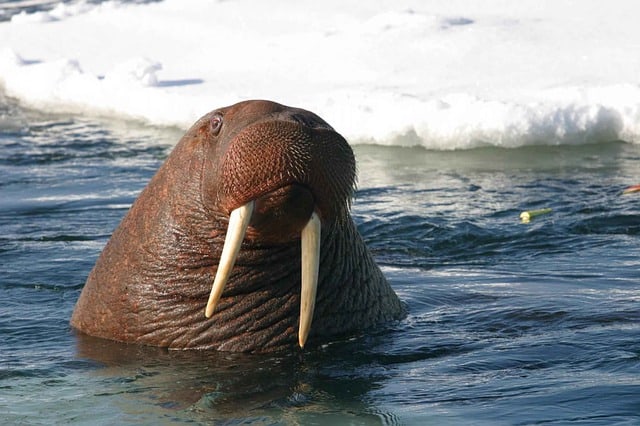
The walrus, also known as morse, is a large-sized ocean animal that belongs to Genus Odobenus, Family Odobenidae, and is found in the North Pole of the Arctic Ocean, oceans of the Northern Hemisphere, and other parts of the ocean.
They have prehensile lips that are powerful enough to suck the meat along with a piston-like tongue that all together can create a vacuum. The combinations of lips and specialized palate of the mouth can act as a suction.
Interestingly, Its small trunk-like mouth bears two long tusks that are used to anchor on the ice to move, and also to fight against other males for gaining female mates.
Tapir
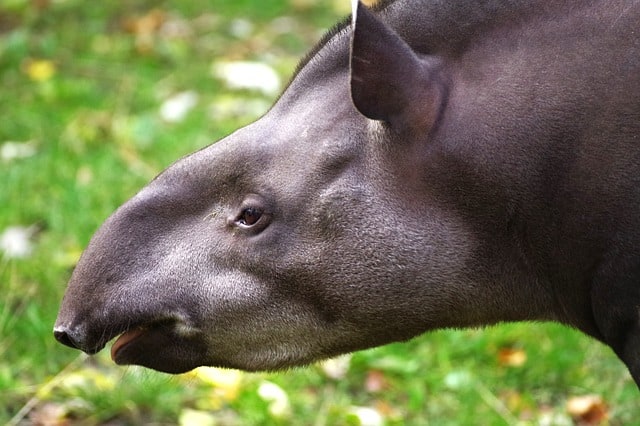
A tapir, including the South American tapir, the Malayan tapir, and other species of tapir, is a large herbivorous animal that belongs to Family Tapiridae, Order Perissodactyla, and is found in South America, Central America, Southeast Asia, and other places.
They have a big nose that acts as the trunk of an elephant but is smaller in size only. This small-sized trunk is actually a modified prehensile nose and is capable of doing many more functions than we could think.
Surprisingly, Its trunk is used for grasping, breathing, holding objects and smelling, and it can act as a snorkel while walking or temporarily hiding in the water to escape from the predators.
Elephant seal

An Elephant seal, including the northern elephant seal, the southern elephant seal, is a large-sized mammal that belongs to Genus Mirounga, Family Phocidae, and is found in Macquarie Island, South Africa, Argentina, Alaska, California, and Baja California in Mexico.
They possess a trunk like an elephant but are smaller in length so they are named an elephant seal. Its short and wider trunk is actually a modified long proboscis nose. These trunks are only present in males as the females lack them, If any females develop them, then they would be smaller in size.
Interestingly, the male uses its trunk to generate loud roars to ward off other recessive males to create dominance, sometimes to gain female mates, and also to communicate.
Saiga antelope

A saiga antelope is a herbivorous mammal belonging to Genus Saiga, Family Bovidae, and is found in Turkmenistan, Uzbekistan, Mongolia, and other regions of Central Asia.
This has an unusual proboscis nose making them look like alien animals from an alien planet. This proboscis nose is treated as a trunk because it can inflate and have flexible abilities. During summer, Its trunk helps in cooling the warm air. In winter, Its trunk helps in warming the cool air and also has the ability to filter the incoming dust particles as it has a wider space with mucous lining.
Interestingly, Its trunk helps in regulating the body temperature irrespective of changes occuring in the surrounding temperature.
Proboscis monkey

The proboscis monkey, also known as a long-nosed monkey is a monkey in the Old World monkey that belongs to Genus Nasalis, Family Cercopithecidae, and is found in southeast Asian island of Borneo, the Asian region, Brunei, Indonesia, and Malaysia.
They have a trunk, a modified large proboscis nose with reddish-brown skin color. However, this trunk or proboscis nose is larger in males than in the females of proboscis monkeys. This large proboscis nose in males is used to make mating calls, alarm the approaching threats, and mainly to attract the females, The larger proboscis nose of the male more female mates he can attract for mating.
Surprisingly, Its proboscis nose swells and turns to red in order to attract the female mates during breeding season.
Moluccan babirusa
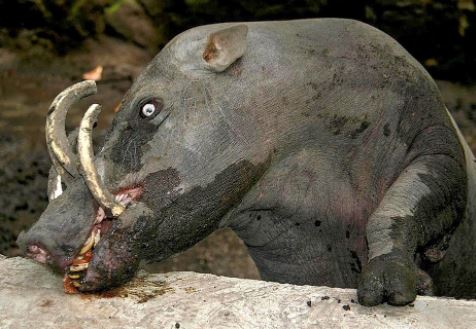
The Buru babirusa, also known as the Moluccan babirusa, golden babirusa, and hairy babirusa, is a wild animal that belongs to Genus Babyrousa, Family Suidae, and is found in the Indonesian islands of Buru, and other places.
They have a trunk-like snout, a modified elongated nose, without rostral bone that is used for digging, finding roots in soft muddy, sniffing, and locating food sources. Interestingly, They possess four fearsome tusks that are curved backside on their elongated snout and act as a symbol of dominance to ward off predators without engaging in a fight.
Unfortunately, They are cannibals, they eat their own young babies.
Read More: Animals With Tusks
Wild Boar

The wild boar, also known as the wild swine, and wild pig, is a pig species that belong to Genus Sus, Family Suidae, and is found in India, Nepal, Burma, Thailand, Sri Lanka, and other places.
They have an elongated snout that can act more than the common nose. Its elongated snout has two nostrils that are highly sensitive to touch. Therefore, they can be used for sniffing, digging, and searching food sources, fighting against other pigs.
Surprisingly, The head and snout of the wild boar are strong and hard as they can able to handle dirt while searching for food.
Aardvark
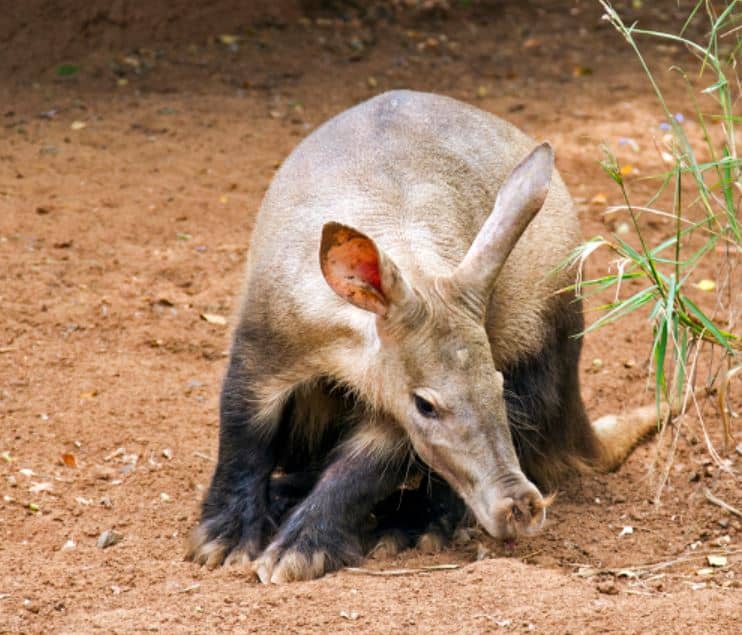
The aardvark is a nocturnal animal belonging to Genus Orycteropus, Family Orycteropodidae, and is found in Sahara, rainforests, of Africa.
This animal has an elongated and round-shape of pig nose that can act more or less like trunks. Its elongated snout has nostrils that are capable of closing to keep the dust away and insects that are invading its snout, and are better at sniffing, locating the termite hills.
Its long snout along with its mouth helps in housing a long sticky and protractile tongue that is about 30 cm in length.
Shrew

A Shrew is a small-sized mammal that belongs to Family Soricidae, Order Eulipotyphla, and is found in New Guinea, Australia, New Zealand, and other places.
They have a long and pointed nose with whiskers that are a little flexible and have better smell sensing ability, sniffing, and locating food sources. Apart from bats and some aquatic mammals, Shrew are the animals that are expected to have echolocation abilities.
Surprisingly, A shrew is not a rodent even though they look or appear like rodents.
Mole
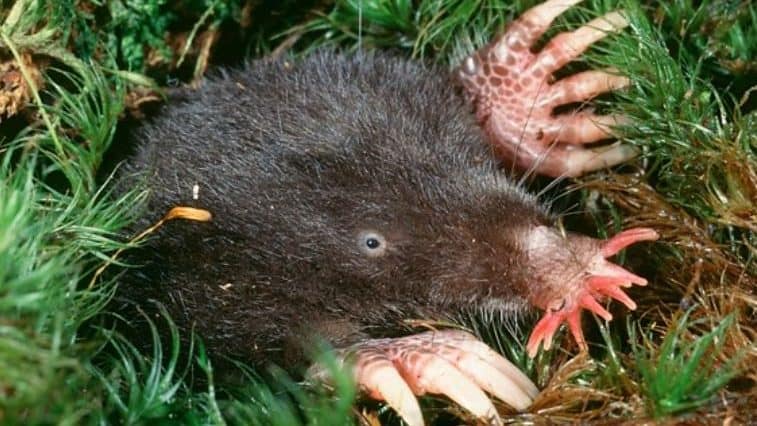
A mole, including European mole, Star-nosed mole, and others, is a very small-sized mammal that belongs to Family Talpidae, Order Eulipotyphla, and is found to live in underground burrows across the many parts of the world depending on the species of the mole.
They have a muzzle-shaped snout, a modified nose, and are more flexible like the trunks. This flexible nose has a good sense of smell and also better touch sensitivity.
For example, A star-nosed mole has a nose with 20 appendages containing about 25,000 tiny sensory receptors that are better at touch sensitivity.
Butterfly
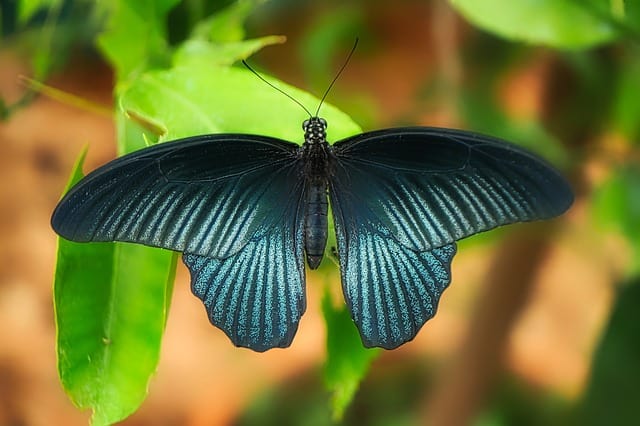
A Butterfly is a small colorful insect that belongs to Order Lepidoptera, Class Insecta, found almost everywhere.
Butterfly has a long, tube-like appendage called a ‘Proboscis’ that works like a straw as it drinks or sips nectar from flowers, water, sugar from fruits, and looks more or less like a trunk as it can be extended, fold or coiled within it when it’s not required.
Interesting thing about Its proboscis is that it is tubular shaped and flexible enough to coil.
Southern Tamandua

The southern tamandua is also known as the collared anteater, lesser anteater is a mammal that belongs to Genus Tamandua, Family Myrmecophagidae, and is found in Argentina, southern Brazil, South America, and other parts of the world.
They have a long snout about 15 inches in length that gradually tapers at the end, and is more or less flexible similar to those trunks. Thus they are able to pass through the ant and termite hills to sniff and slurp up the ants and termites through their long and sticky tongues.
Tamandua has an elongated snout with an elongated tongue flexible enough to pass through the grooves of termite and ant mounds to catch prey.

